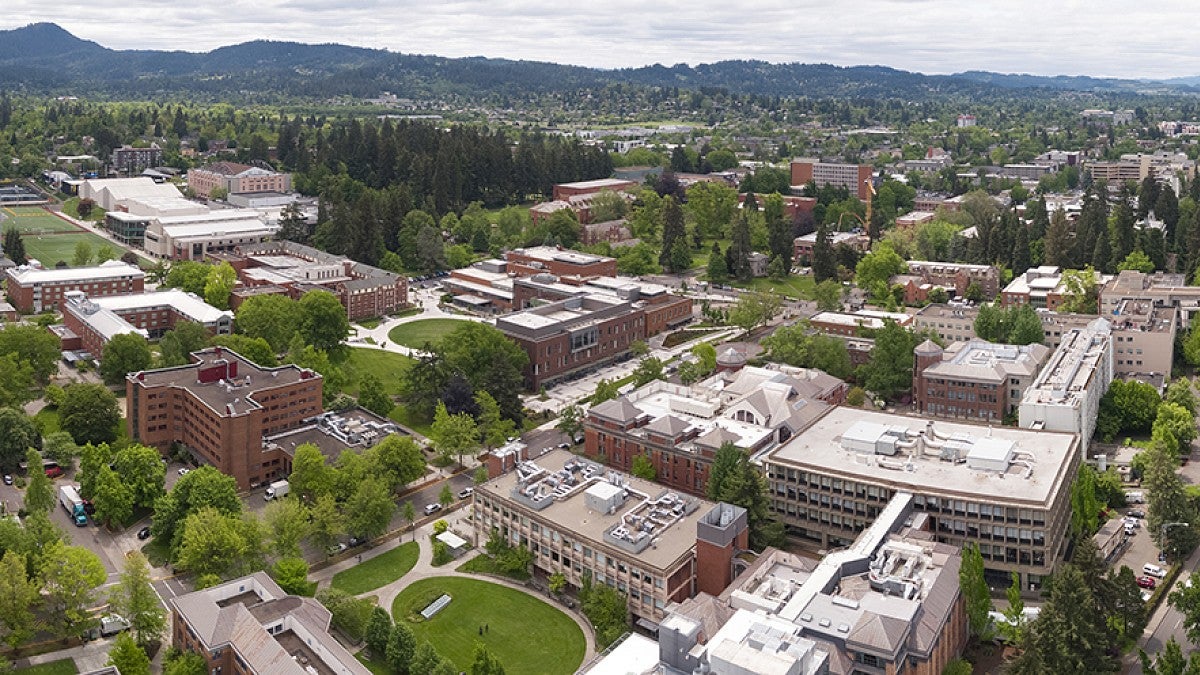A pair of new maps will make the University of Oregon more accessible to the Latinx community, thanks to a group of students who translated two major campus maps into Spanish.
The project was inspired by a Community Engagement Committee meeting that UO librarian Bronwen Maxson attended through the Dreamers Working Group, where she learned that the challenge of navigating campus and parking is one of the greatest barriers to Latinx engagement with the UO campus and university events.
Maxson reached out to the UO’s Spanish Heritage Language Program to explore a partnership to translate two major campus maps into Spanish. Since the program was designed for students who have a personal, familial or community connection to Spanish, Maxson believed they would be an ideal group to help translate the maps into a version of Spanish actually used by the local community as well as UO students and their families.
“It was really important from the beginning of this project that the Spanish translation of the map represent the Spanish of the local community and our students,” Maxson said.
UO Spanish instructor Heather Quarles was eager to collaborate on the initiative through her Spanish 228 class, especially since one of the objectives of the Spanish Heritage Language Program is to take Spanish learning outside the classroom. Her spring term students were able to accomplish the goal by working together to translate more than 500 UO labels and landmarks into Spanish from both the interactive campus map and the transportation services parking map.
While the task of translating 500 words may seem like a fairly straightforward assignment, the students quickly learned that it was not as simple as substituting one English word for its Spanish counterpart and that there is a great deal of linguistic variation to consider in translation work, as every region and community worldwide where Spanish is spoken has its own variation of the language.
As the students diligently worked to find the best Spanish fit for each English word, they saw firsthand how different families within the class and local Oregon communities used several varieties of Spanish. Because of that, certain phrases sparked robust discussion and debate about how to best represent them in Spanish on the campus map.
Memorable examples for Quarles and her students include The Duck Store, various versions of roadways including parkways and lanes, and whether to use numerical street numbers or spell them out as Spanish words.
“Doing this translation work pushed the students to consider different regional and stylistic variations of Spanish as they thought about which version to represent on the map,” Quarles said. “It was a really collaborative effort between the students, their families and the local Spanish-speaking community.”
The project also empowered the students to learn more about their cultural identity. Because many students in the class grew up in Spanish-speaking households, they were able to draw from their personal experience and familial knowledge to ensure the maps were an authentic translation. Many students even involved their families in the classwork, a task that was made more accessible when the COVID-19 pandemic sent many of them back home for remote learning.
One of them was first-year student Kevin Neri, who returned to the Bay Area after the UO pivoted to remote learning. As he tackled challenging translations, Neri consulted with his parents, who immigrated to the United States from Mexico.
Kevin grew up in a Spanish-speaking household but had never taken a Spanish class before. He was immediately struck by how powerful it was to be surrounded by so many Hispanic classmates and to work on a project that taught him so much about his own cultural and linguistic identity – and those of his classmates.
“This project helped us see how important it is to understand other people’s identities and cultures,” Neri said. “And it’s really exciting that we were able to use that knowledge to produce a map that will make it easier for Latinx parents and students to get around campus.”
Many of the students in the class echoed Neri’s pride in the final product, as they saw their voices and identities reflected in the project and felt they’d created something that could be a meaningful asset to the Latinx community.
“In these divisive times, it is imperative that we find ways to promote tolerance,” first-year student Anthony Hansen said. “With these translations, I feel many in the Latinx community will feel more accepted at the UO, and they will know that their children are attending a school that is inclusive.”
—By Emily Halnon, University Communications


